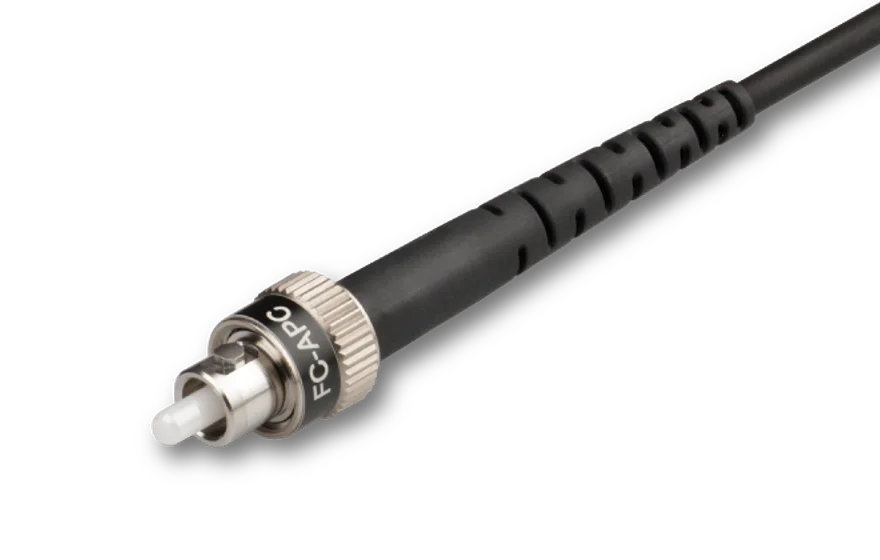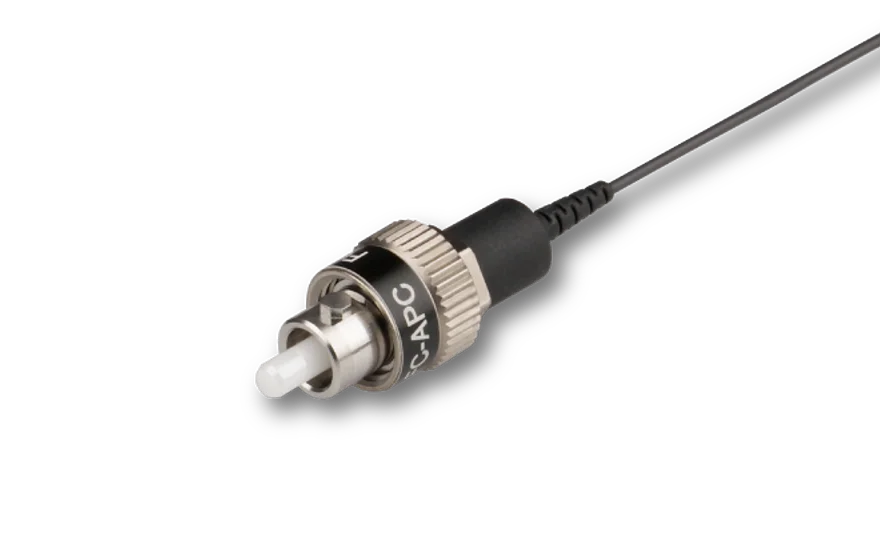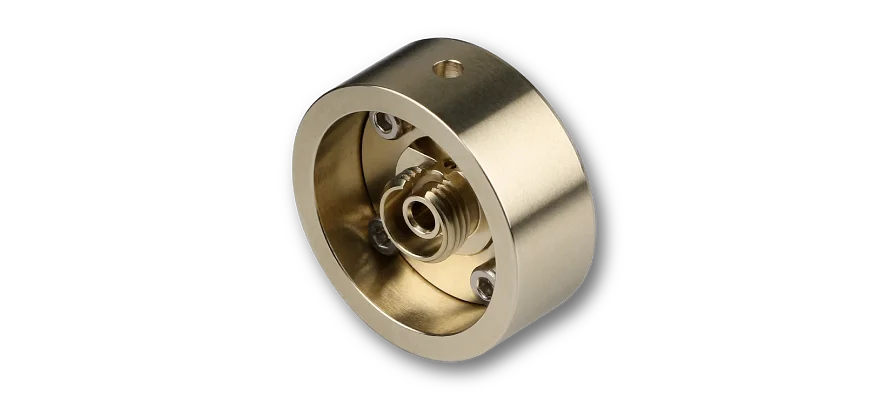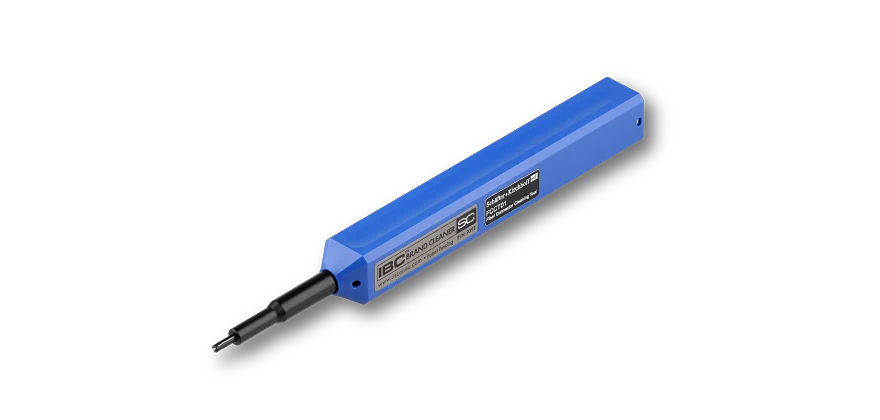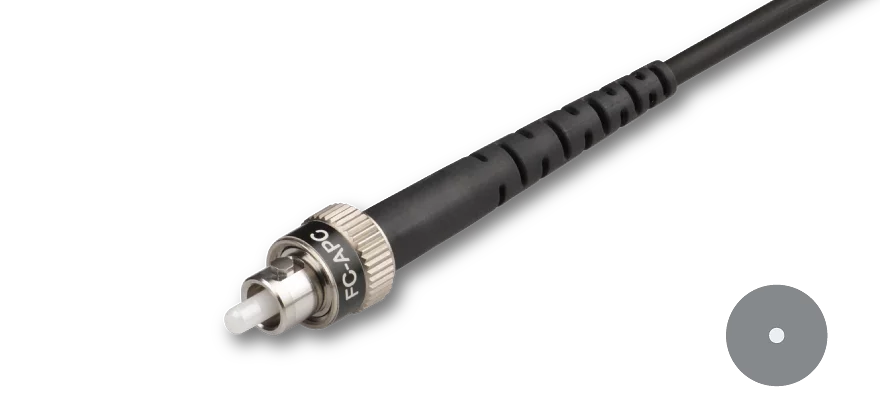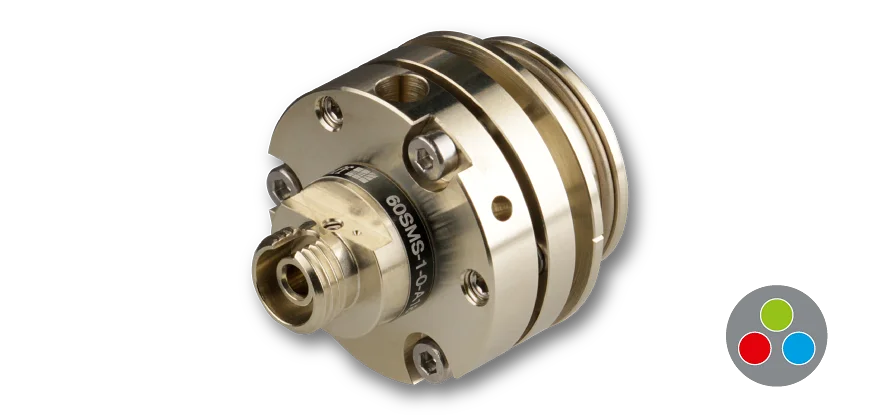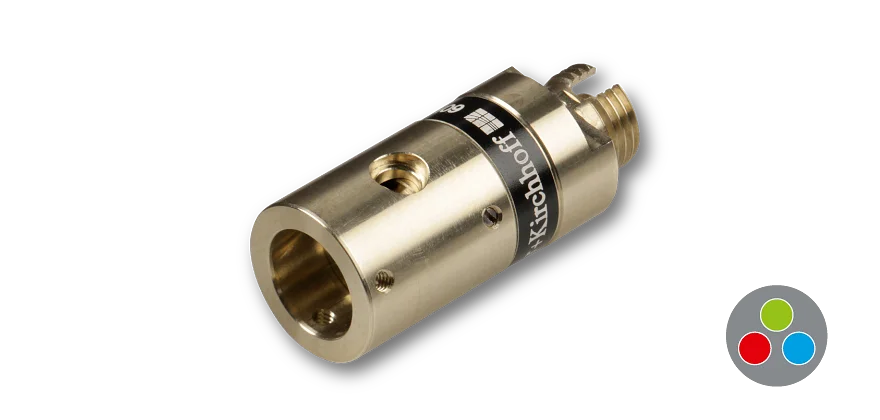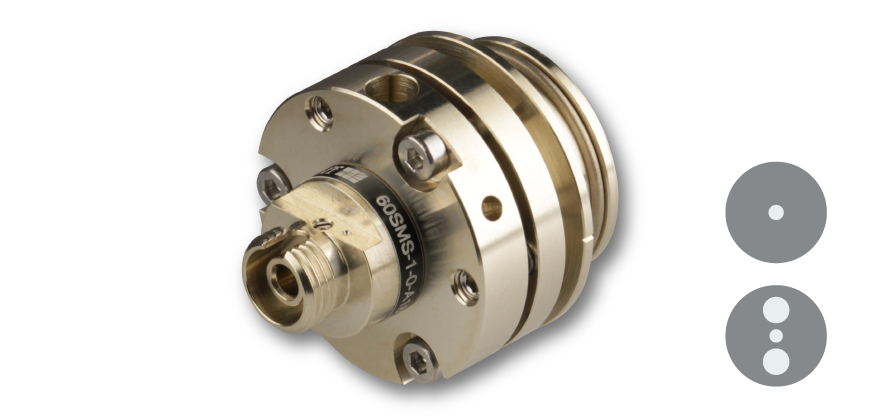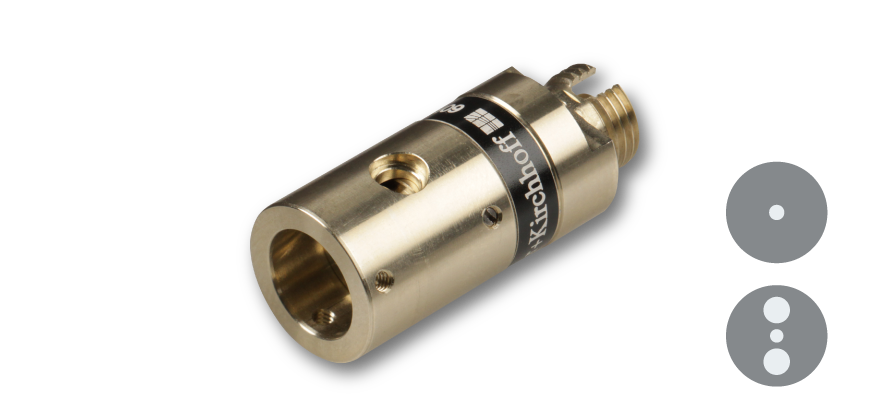Polarization-maintaining, single-mode fiber cable (PM fiber cable) with Gaussian intensity distribution and low-stress fiber connectors.
Fiber
The fiber is a polarization-maintaining, single-mode fiber, defined by its NA and its cut-off wavelength. The nom. NA is specified by the fiber manufacturer. Additionally the effective numerical NAe2 is measured for each fiber batch by Schäfter+Kirchhoff. Cut-off wavelengths range from 360 nm to 1550 nm and the fibers altogether cover a wavelength range of 360 nm to 1800 nm. Each fiber has an operational wavelength range of about 100-300 nm. Besides the nominal cut-off wavelenght λco, Schäfter+Kirchhoff also offers measured data for the cut-off wavelength for each individual fiber cable.
Some fibers have special features e.g.
- Pure silica core for long-term stable low attenuation and high transmission for < 460 nm
- Special fibers with extra low NA that leads to a lower power density in the fiber core compared to a standard fiber with standard NA. The maximum power level (described by the Brillouin threshhold) that can be transmitted in the fiber is shifted to a higher value. Please note that there are other limiting factors e.g. concerning the fiber end faces.
Fiber Cable
The fiber length can be customer-specified (there is a minimum fiber length). The polarization-maintaining fiber cables are offered as Ø 900 µm buffer in black, or a Ø 3 mm cable in black with Kevlar strain-relief.
Fiber Connectors
For each fiber end the fiber connectors can be selected from a wide range of connector types (FC, AVIM (compatible with LSA), E2000) with 0°-polish or 8°-polish. All fiber connectors of type FC assembled by Schäfter+Kirchhoff have an alignment index (key). The wide key (type "N") fiber connector has an alignment index (key) of 2.14 mm width. The narrow key (type "R") fiber connector has an alignment index (key) of 2 mm width. Special fiber connectors are available so that the fiber cable is vaccum compatible down to 10-7 mbar (only Ø 900 µm buffer fiber cables).
High PER fibers
During the manufacturing of PM fibers, great care is taken to ensure a high PER. Typical PER values are ≥21 dB to ≥ 26 dB depending on wavelength and connector type.
End Caps
The fiber connectors can be equipped with an end cap connector. This means that a short piece of fiber (< 300 µm) without a core is spliced onto the polarization-maintaining fiber. Without a fiber core to confine the beam, the mode field diameter of the beam already starts to diverge within the fiber end cap, significantly reducing the power density at the fiber end-face.
Amagnetic fiber connectors
For FC PC or FC APC type connectors amagnetic versions completely made of titanium can be selected. Those connectors have a ceramic ferrule.
